FRENCHTOWN, N.J. – The Delaware River Joint Toll Bridge Commission today approved a contract with an engineering consulting firm – WSP USA, Inc. of Exton, Pa. – to design a rehabilitation project expected to be carried out in 2025 at the 92-year-old Uhlerstown-Frenchtown Toll-Supported Bridge.
Currently, the envisioned rehabilitation project’s major tasks include:
- Repair various pieces of the bridge’s steel superstructure;
- Clean and repaint the bridge’s steel superstructure and underlying bearings;
- Repairs to the bridge’s abutments, piers, and retaining walls; and
- Install a programmable LED lighting system to highlight the bridge’s architectural profile at night along the river. This would be the third Commission bridge to be outfitted with such a lighting system.
The planned rehabilitation is intended to put the bridge in a good state of condition and extend its service life so it will not need a major rehabilitation for another 15 years. The bridge’s current steel superstructure opened to traffic on October 10, 1931. It was last rehabilitated in 2001. The bridge links the Borough of Frenchtown in Hunterdon County, N.J. with the Uhlerstown section of Tinicum Township in Bucks County, PA.
WSP USA’s design contract award is for an amount not to exceed $1,771,189. A significant design objective for WSP will entail sequencing the rehabilitation project’s tasks and identifying the range of travel impacts that may be necessary to carry out project construction in 2025.
An initial task for WSP USA is performing a detailed bridge inspection to confirm and identify bridge conditions to be addressed under the rehabilitation project. These inspections could require periodic alternating single-lane travel restrictions at the bridge. WSP USA also is directed to examine the bridge walkway’s condition to see if warrants replacement or repairs.
After the bridge inspection process, design engineers will map a course of action to address identified issues with the bridge and plan out the other major tasks the Commission has budgeted to be conducted under this project.
The engineering firm will develop drawings, list structural details, compile construction specifications and map traffic-control plans that might be needed.
Two open houses – ideally one in Frenchtown and one in Tinicum — are expected to be held during the latter part of the design process. These sessions are intended to help inform residents, motorists and businesses about the project’s purpose, relay substructure and superstructure conditions that need rehabilitation or repair, show bridge architectural lighting renderings, explain any travel restrictions that might be needed to carry out the project’s construction stages, and summarize the project’s anticipated work schedule. The public would be encouraged to ask questions and submit comment at those sessions. The Commission also plans to create a specific webpage for this project that could be accessed through the agency’s website – www.drjtbc.org. The webpage will be updated periodically as more information becomes available during design and construction.
The current project schedule anticipates the design process reaching completion in the fall. Project construction could then be advertised for competitive bids and a contract award by the start of 2025. Project construction would then begin by late winter 2025 and reach completion later that year.
The Uhlerstown-Frenchtown Toll-Supported Bridge is a six-span riveted steel Warren truss structure that was constructed in 1931. The bridge’s wooden road deck was replaced with a steel open-grate deck in 1949. The bridge is narrow, with a clear roadway width of 16-feet 6-inches curb to curb. A concrete-filled steel grating sidewalk is supported by the upriver truss on steel cantilever brackets.
The original bridge at this location was completed in 1843. It was constructed for the private shareholder-owned Alexandria Delaware Bridge Co. (Frenchtown at the time was an unincorporated portion of Alexandria Township, N.J.). The bridge had six covered wooden spans using latticed “Town-Type” trusses. The “pumpkin flood” of October 10, 1903 carried away the two wooden spans nearest the New Jersey approach. These were replaced with steel through truss spans in 1905. The bridge’s original masonry substructure — five piers and two abutments — remain in service today.
This river crossing operated as a private toll bridge for its first 86 years. The states of Pennsylvania and New Jersey jointly purchased it from the Alexandria Delaware Bridge Co. in a transaction facilitated by the former Joint Commission for Elimination of Toll Bridges on June 28, 1929 and immediately made it toll-free. The states transferred ownership of the river crossing outright to the Delaware River Joint Toll Bridge Commission on July 1, 1987. The Commission operates and maintains the bridge with a portion of the proceeds it collects at its eight toll bridges.
The aging bridge has a 15-ton weight limit, a 12’-6” height restriction, and a 15 MPH speed limit. It carried an average of 4,200 vehicles per day in 2023.
